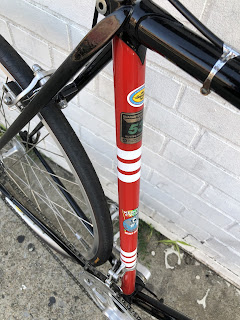Although murals have painted for about 30,000 years (if you count such works as the Lascaux cave paintings), they really weren't a major art form in the United States until the early 20th Century, when the Progressive Era engendered protest against big business and imperialist wars. They really became a part of American life during the 1930s, when President Franklin D. Roosevelt, as part of his New Deal, commissioned artists including Diego Rivera who, along with some fellow Mexicans, were sponsored by their president, Albero Obergon as part of a nationalist cultural program during the previous decade.
It was as if Depression-era America and murals found each other: the medium was ideal for expressing the hardships of the time as well as elevating workers and other everday people. (How hard do I work if I'm writing sentences like that?) In other words, murals are a "people's" art form, which is exactly what the nation and society needed as it was confronting the failures of an economy and culture in which a focus on individualism had run riot.
I admit that I am not an art historian, so what I've presented is a comic-book version, at best, of the history and importance of murals. But I think it will help to make sense of what I'm about to say next: Bicycle Recycleries and murals go together like, well, cycling and people.
If murals are the most democratic visual art form, then bicycle recycleries (like my local Recycle-a-Bicycle) are the people's bike spaces. Not only is it possible to find reasonably-priced reconditioned and rebuilt bikes in them, but most offer bike repair classes and volunteer programs. Some also offer internships as well as other community services and programs.
For years, Recycle Bicycle operated out of a warehouse on Atlas Street in Harrisburg which, in spite of being Pennsylvania's capital, is one of the state's poorest communities. (It tried to declare bankruptcy ten years ago but a judge blocked it from doing so.) Its people suffer from the same lack of opportunities and health problems that afflict people in other poverty-stricken areas. So the need for affordable transportation and recreation is as great as it is in other impoverished urban enclaves.
The mural on that building became part of the organization's identity. So, when the building was sold and Recycle Bicycle was forced to move two years ago, some feared the work of public art would be gone forever.
That is, until longtime volunteer and board member Jennifer Donnelly climbed a ladder into the loft of the warehouse. There, among tools, she found something familiar: the stencils used to create a whimsical scene of children and swirling purples and blues.
Other volunteers pulled panels from the mural and Ralphie Seguinot, the self-taught artist who painted it, recreated it, with some modifications, on the new location.
 |
| From The Burg |
Donnelly explained that Recycle Bicycle raised half of the funds for the project from community donations. That is fitting because, she says, having the mural--which became closely identified with Recycle Bicycle--on the new building is important to the organization and its mission of creating a community space.
That's what bicycle recycleries are, and what murals help to define: community space.












































